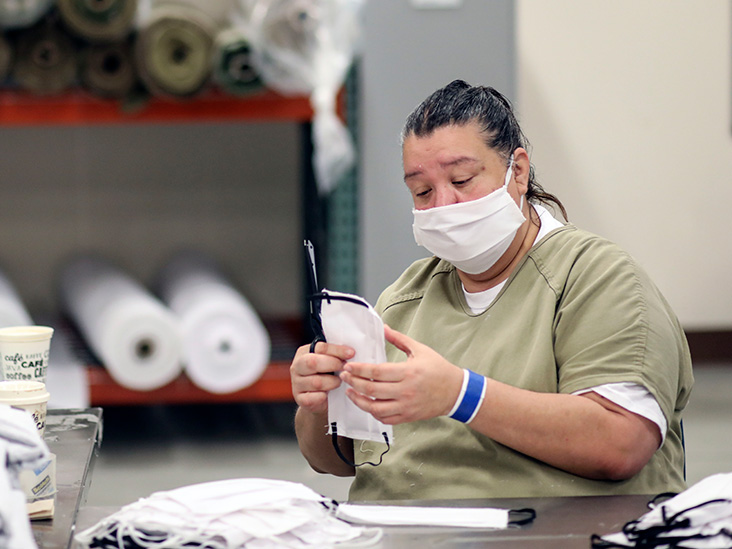A new analysis of COVID-19 in prisons in the United States finds that the number of cases is five times higher, and the number of adjusted deaths is three times higher than in the general population.

Image credit: Sandy Huffaker / AFP.
In many ways, prisons are an ideal ‘breeding ground’ for contagious diseases, due to conditions of close confinement, shared facilities, and overcrowding.
According to an older article in Clinical Infectious Diseases, newly incarcerated prisoners have higher rates of viral infections, such as HIV and hepatitis. They are also at a higher risk of contracting an infectious disease while they are in prison, including airborne infections, such as tuberculosis (TB) and influenza.
The COVID-19 pandemic has brought these issues into focus. The close conditions, lack of personal protective equipment (PPE), and high rates of respiratory and cardiac diseases among inmates place them at a higher risk of developing a severe form of COVID-19.
Stay informed with live updates on the current COVID-19 outbreak and visit our coronavirus hub for more advice on prevention and treatment.
Prisons in California have seen particularly high rates of the disease. For example, more than one-third of inmates and staff at San Quentin Prison tested positive for the virus. As a result, California is to release thousands of prisoners early from state prisons to help slow the spread of COVID-19.
A new analysis of COVID-19 in federal and state prisons in the U.S. finds that the rate of cases and deaths are significantly higher than in the general population.
The analysis highlights the need for infection control in prisons and appears in the Journal of the American Medical Association (JAMA).
Researchers at Johns Hopkins Bloomberg School of Public Health, in Baltimore, MD, analyzed COVID-19 cases and deaths among federal and state prisoners between March 31 and June 6, 2020.
The data were collected as part of the UCLA Law COVID-19 Behind Bars project and comes from publicly available sources, such as websites, news reports, and press releases.
In combination with data from the Centers for Disease Control and Prevention (CDC) and the US Census Bureau’s American Community Survey, the researchers compared rates of COVID-19 cases and d

